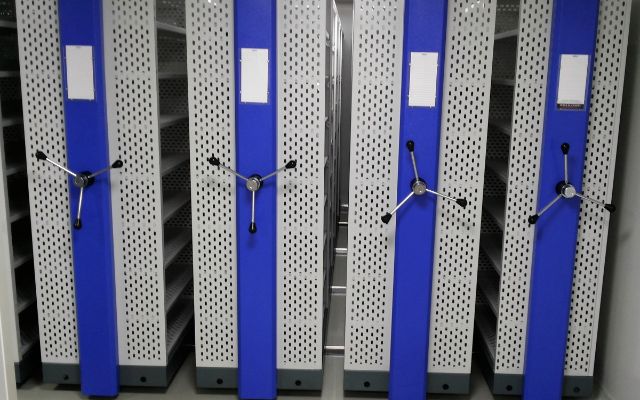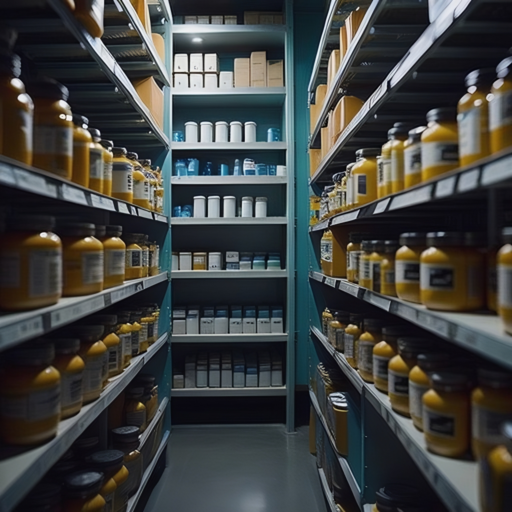In the rapidly evolving pharmaceutical industry, efficient storage space management plays a crucial role in ensuring seamless operations and maintaining product integrity. With a diverse range of medications, vaccines, and healthcare products requiring specialized storage conditions, pharmaceutical companies must invest in strategic space planning to meet regulatory requirements and maximize operational efficiency. In this article, we will explore the key considerations and actionable tips for pharmaceutical companies to optimize their storage space effectively.
1) Prioritize Compliance with Regulatory Standards:
Understanding Regulatory Complexity: Pharmaceutical companies operate within a labyrinth of stringent regulations established by various authorities like the FDA, EMA, WHO, and national health agencies. These regulations are designed to ensure product safety, efficacy, and patient well-being. They cover a wide array of factors, including storage conditions, handling, documentation, and distribution.
Tailored Storage Solutions: Different pharmaceutical products have unique storage requirements. Vaccines, for instance, demand precise temperature control to maintain their potency. On the other hand, some medications can deteriorate due to exposure to light or humidity. Compliance entails understanding these distinct needs and designing storage areas accordingly.
Investment in Infrastructure: Creating compliant storage spaces involves financial commitment. This includes building temperature-controlled environments, installing monitoring systems, and incorporating security measures to prevent unauthorized access.
Staff Training and SOPs: Compliance isn’t just about infrastructure; it’s also about people. Training employees on proper storage procedures and equipping them with detailed Standard Operating Procedures (SOPs) is vital. They should understand not only the “what” but also the “why” behind compliance, so they can execute tasks effectively.
2) Implement a Robust Inventory Management System:
Efficient Inventory Tracking: Pharmaceutical storage involves a vast array of products with varying shelf lives. A robust inventory management system is crucial for tracking these items, managing expiration dates, and ensuring that products are used before they become unusable.
Real-time Monitoring: Modern inventory management systems offer real-time monitoring capabilities. This is particularly valuable for temperature-sensitive products. If a storage unit’s temperature deviates from the prescribed range, the system can trigger alerts, allowing swift corrective action.
Reduction in Waste: A well-implemented inventory management system minimizes waste. Medications are utilized before their expiration, preventing valuable resources from being discarded due to negligence.
Efficient Reordering: Automated inventory systems can be programmed to reorder products when their quantities drop below a certain threshold. This prevents stock-outs and ensures a steady supply of essential medications.
3) Embrace Proper Shelving and Racking Systems:
Customized Storage Solutions: The diverse nature of pharmaceutical products necessitates adaptable storage systems. Compactor storage systems and racking solutions offer versatility by allowing adjustable shelves and configurations based on the size and quantity of products.

Optimized Space Utilization: Vertical space is often underutilized in storage areas. Racking systems capitalize on this by providing multi-tier storage options, maximizing available space.
Accessibility and Organization: Effective storage solutions enhance accessibility to products. Clear labeling, categorization, and systematic shelving streamline the retrieval process, reducing errors and delays.
Clean and Contamination-Free: Modern shelving and racking systems are designed to be easy to clean and maintain. This is essential to prevent cross-contamination and ensure the hygiene required in pharmaceutical environments.
Benefits of Proper Shelving and Racking for Maximum Storage space:
- Space Optimization: Well-designed storage systems make the most of available space, reducing the need for costly expansions.
- Time Efficiency: Organized storage expedites the retrieval process, minimizing search time and increasing operational efficiency.
- Product Safety: Properly designed racking systems can prevent products from falling, ensuring the safety of both staff and products.
- Hygiene and Compliance: Easy-to-clean systems reduce contamination risks and aid in maintaining compliance with cleanliness standards.
4) Utilize Temperature-Controlled Storage Units:
Preserving Product Integrity: Temperature-sensitive pharmaceuticals, vaccines, and biologics can lose their effectiveness when exposed to improper temperatures. Utilizing temperature-controlled storage units, such as refrigerators, freezers, and cold rooms, is critical to maintaining the integrity of these products. Stainless steel mobile compactor storage systems are the best solution which will increase your storage space as well as keep the products in a temperature control environment.
Temperature Monitoring Systems: Modern temperature-controlled units often come equipped with advanced monitoring systems that track and record temperature fluctuations. Alerts can be set up to notify personnel in case of temperature deviations.
Validation and Calibration: Regular validation and calibration of temperature-controlled units are essential to ensure their accuracy. This involves comparing the actual temperature inside the unit with the temperature displayed on the control panel.
Cold Chain Management: Cold chain management involves maintaining a consistent temperature range throughout the storage and distribution process. Temperature-controlled units are the cornerstone of an effective cold chain, ensuring that products remain viable from manufacturer to patient.
5) Optimize Warehouse Layout and Workflow:
Logical Flow Patterns: Designing an efficient layout ensures that materials flow smoothly through the warehouse. This involves arranging storage areas, workstations, and pathways logically to minimize unnecessary movement.
Zoning: Categorizing storage areas based on product type, temperature requirements, or demand can streamline operations. This prevents cross-contamination, reduces the risk of errors, and simplifies inventory management.
Ergonomics: Workstation design should prioritize employee comfort and safety. This includes factors like proper lighting, easy access to tools, and minimizing excessive bending or lifting.
Space Utilization: Optimizing vertical space through multi-tier racking systems and efficient shelving can significantly increase storage capacity without expanding the physical footprint.
6) Embrace Lean Principles and Automation:
Minimize Waste: Lean principles aim to minimize waste in processes, resources, and time. Applying these principles to pharmaceutical storage involves reducing excess stock, optimizing order quantities, and eliminating non-value-added activities.
Just-In-Time (JIT) Inventory: JIT inventory management involves ordering and receiving stock only as it is needed, minimizing storage costs and the risk of product obsolescence.
Automation and Robotics: Automating certain tasks like picking, packing, and even inventory tracking using robotics enhances speed, accuracy, and efficiency. This also frees up human resources for more strategic tasks.
7) Regularly Audit and Optimize Space Utilization:
Scheduled Audits: Regularly auditing storage space utilization helps identify underutilized areas, overstocked items, or products approaching expiration.
Demand Analysis: Analyzing product demand patterns can guide decisions about optimal stock levels, preventing overstocking or stockouts.
Continuous Improvement: Implementing a culture of continuous improvement will be highly beneficial. Use audit results to make necessary adjustments to storage configurations and workflows.
Innovative Solutions: Stay updated with industry trends and innovative storage solutions that could enhance your space utilization further.

